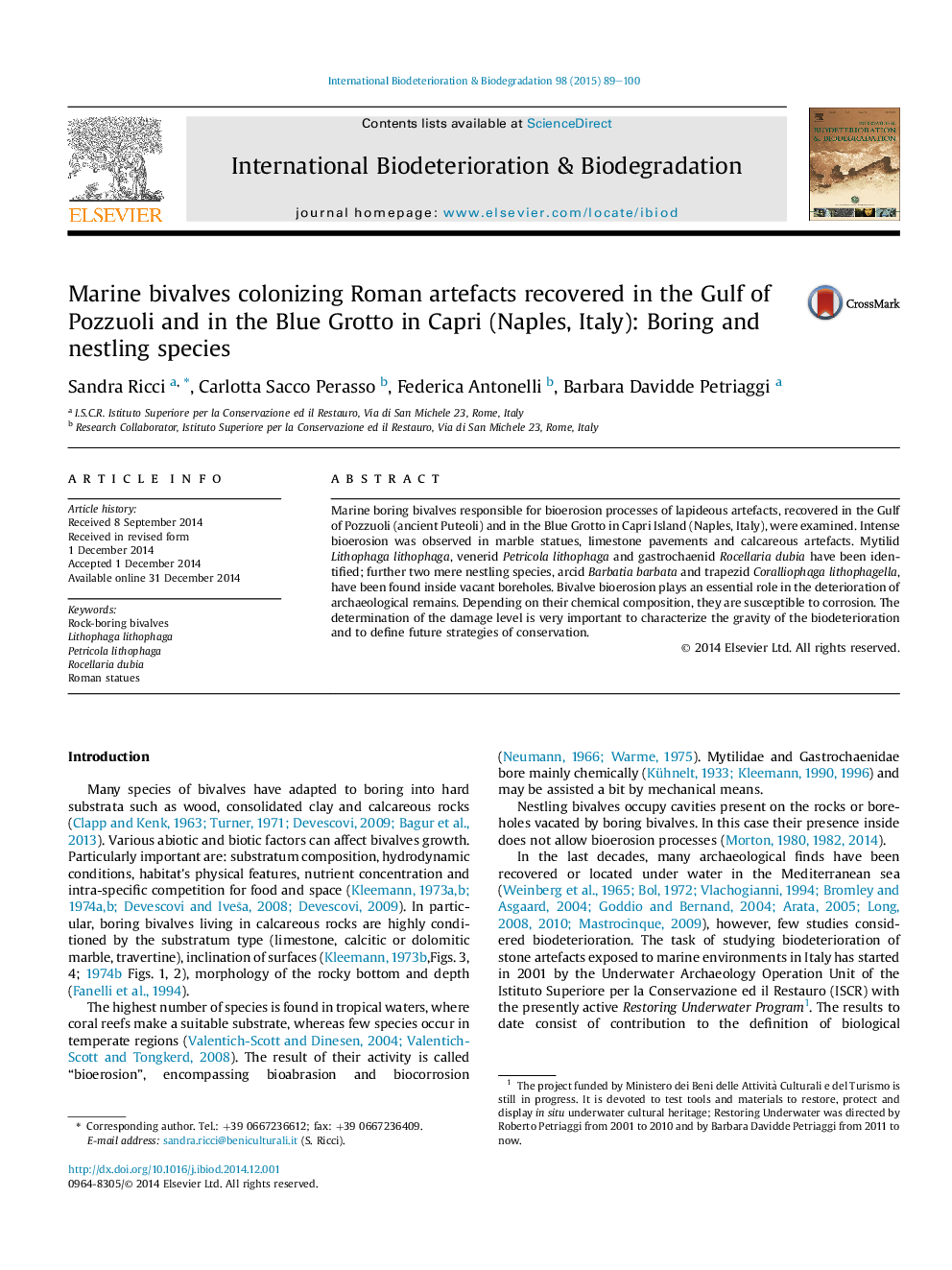| Article ID | Journal | Published Year | Pages | File Type |
|---|---|---|---|---|
| 4364587 | International Biodeterioration & Biodegradation | 2015 | 12 Pages |
•Marine boring bivalves are responsible for bioerosion of lapideous artefacts (Naples, Italy).•Intense bioerosion was observed in marble statues, limestone pavements and calcareous artefacts.•Three boring species (Lithophaga lithophaga, Petricola lithophaga, Rocellaria dubia) have been identified. •Two nestling species (Barbatia barbata and Coralliophaga lithophagella) have been found inside vacant boreholes. •Bivalve bioerosion plays a significant role in the deterioration of archaeological artefacts.
Marine boring bivalves responsible for bioerosion processes of lapideous artefacts, recovered in the Gulf of Pozzuoli (ancient Puteoli) and in the Blue Grotto in Capri Island (Naples, Italy), were examined. Intense bioerosion was observed in marble statues, limestone pavements and calcareous artefacts. Mytilid Lithophaga lithophaga, venerid Petricola lithophaga and gastrochaenid Rocellaria dubia have been identified; further two mere nestling species, arcid Barbatia barbata and trapezid Coralliophaga lithophagella, have been found inside vacant boreholes. Bivalve bioerosion plays an essential role in the deterioration of archaeological remains. Depending on their chemical composition, they are susceptible to corrosion. The determination of the damage level is very important to characterize the gravity of the biodeterioration and to define future strategies of conservation.
